
Pachyveria Bea - Succulent Plant
(MRP Inclusive of all taxes)
- Shipping ₹79 for entire order
- Dispatch in 7 days
- Country of origin: India

(MRP Inclusive of all taxes)
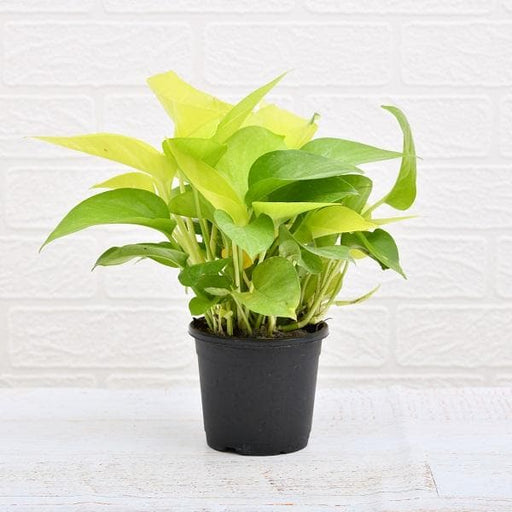 Save 29%
Save 29%
Air Purifier Money Plant with Pot The Air Purifier Money Plant, also known as Pothos or Epipremnum aureum, is a stunning indoor plant that...
View full details
 Save up to 15%
Save up to 15%
Peace Lily, Spathiphyllum - Plant The Peace Lily, scientifically known as Spathiphyllum, is a stunning houseplant celebrated for its elegant white...
View full details
 Save 25%
Save 25%
Jasminum sambac, Mogra, Arabian Jasmine - Plant Jasminum sambac, commonly known as Mogra or Arabian Jasmine, is a fragrant flowering plant...
View full details
 Save 18%
Save 18%
Combo Constituents Includes the Parijat Tree (Night-Flowering Jasmine), a culturally significant plant with fragrant flowers. Description The Pari...
View full details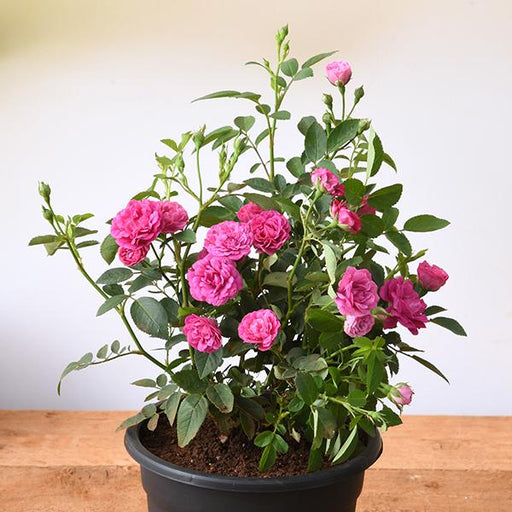
 Save 25%
Save 25%
Miniature Rose, Button Rose (Any Color) - Plant The Miniature Rose, also known as the Button Rose, is a charming and compact flowering plant that ...
View full details Save 25%
Save 25%
Damascus Rose, Scented Rose (Any Color) - Plant The Damascus Rose, also known as Rosa damascena, is a timeless symbol of beauty and romanc...
View full details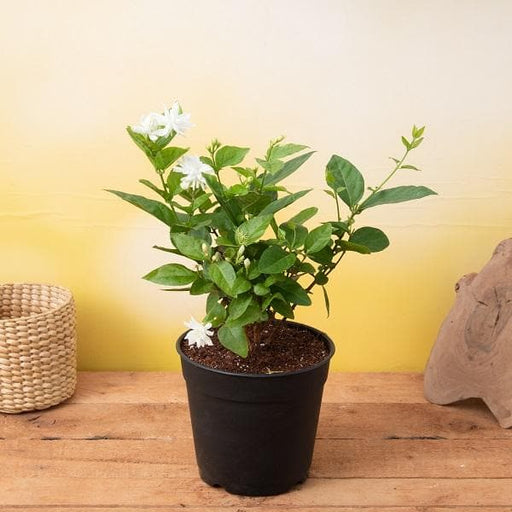
 Save 17%
Save 17%
Beautiful Fragrant Mogra, Arabian Jasmine Plant with Pot The Beautiful Fragrant Mogra, also known as Arabian Jasmine (Jasminum sambac), is...
View full details Save 15%
Save 15%
Pack of Vermicompost and Neem Cake for House Plants Transform your indoor garden with our premium Pack of Vermicompost and Neem Cake, spec...
View full details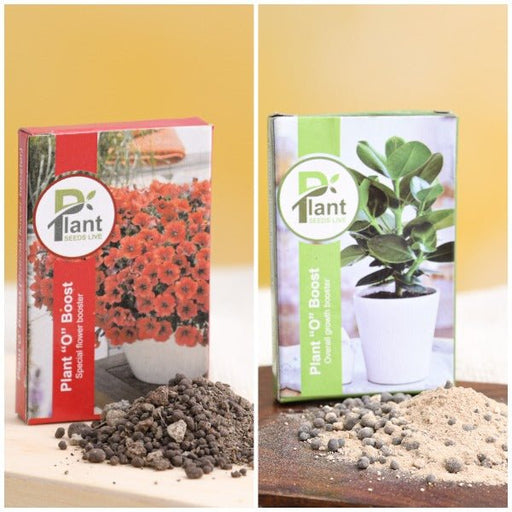
Pack of Plant Growth and Flower Boosters Unlock the full potential of your garden with our Pack of Plant Growth and Flower Boosters! This ...
View full details Save 38%
Save 38%
Combo of Jeevamrut and Neem Raksha for Easy Growth and Protection of Houseplants Transform your indoor garden with our exclusive combo of ...
View full details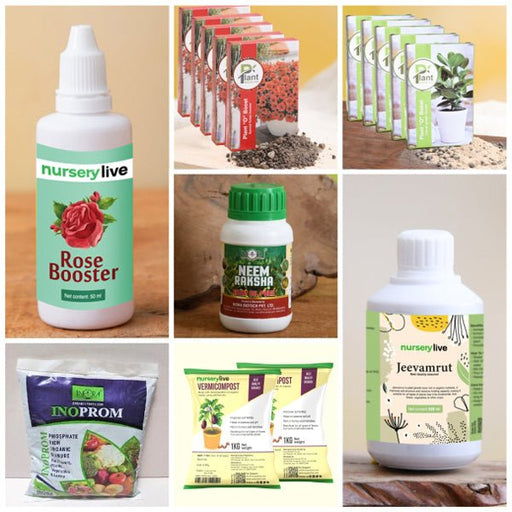 Save 22%
Save 22%
Plant Nutrients Kit (Pack of 16) for a Healthy Garden Transform your garden into a lush paradise with our Plant Nutrients Kit, featuring 1...
View full details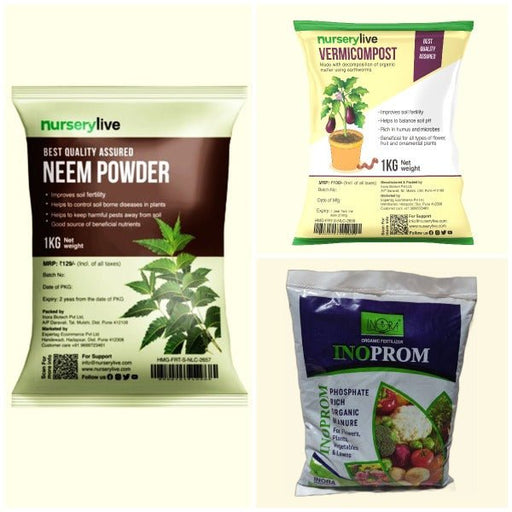 Save 16%
Save 16%
Combo of Top Plant Fertilizers Elevate your gardening game with our exclusive Combo of Top Plant Fertilizers, featuring two bags of premiu...
View full details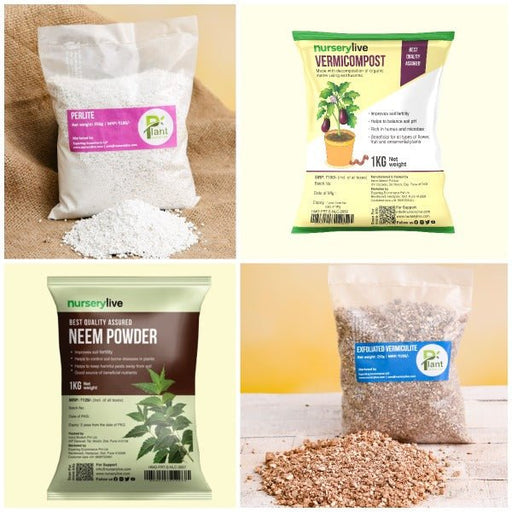 Save 24%
Save 24%
Pack of 4 Additives to Make Soil Healthy and Nutrient Rich Transform your garden into a thriving ecosystem with our Pack of 4 Additives de...
View full details Save 30%
Save 30%
Transform your gardening experience with our premium Combo of Perlite and Vermiculite. This unique blend is designed to enhance soil aeration and ...
View full details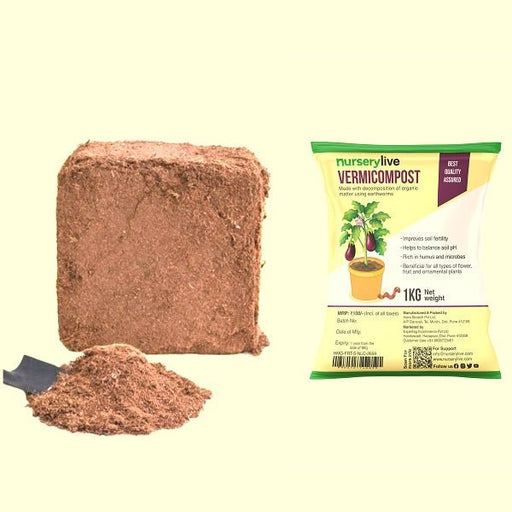 Save 27%
Save 27%
Combo of 2 Vermicompost and Cocopeat - Enrich Your Soil Naturally! Transform your garden into a thriving ecosystem with our Combo of 2 Ver...
View full details
 Save 35%
Save 35%
Best 6 Plants for Perfect Indoor Garden Transform your living space into a lush oasis with our curated collection of the Best 6 Plants for a...
View full details
 Save up to 50%
Save up to 50%
Mini Succulent Garden Pack Transform your space with our Mini Succulent Garden Pack, featuring a delightful collection of 4 any variety beautiful s...
View full details
 Save 30%
Save 30%
5 Best Fragrant Plants Transform your garden or indoor space into a fragrant paradise with our curated selection of the 5 Best Fragrant Plants. Th...
View full details
 Save 24%
Save 24%
Set of 2 Bonsai Looking Grafted Adeniums Transform your indoor or outdoor space with our exquisite Set of 2 Bonsai Looking Grafted Adenium...
View full details Save 45%
Save 45%
Top 4 Die Hard Succulents Pack Transform your indoor or outdoor space with our Top 4 Die Hard Succulents Pack, featuring a curated selecti...
View full details
 Save 30%
Save 30%
5 Best Indoor Plants Pack Transform your living space into a lush oasis with our '5 Best Indoor Plants Pack.' This carefully curated collection fe...
View full details
 Save 25%
Save 25%
Set of 4 Evergreen Air Purifier Plant Pack Transform your indoor space into a lush, green oasis with our Set of 4 Evergreen Air Purifier Pla...
View full details| SrNo | Item Name | Qty |
|---|---|---|
| 2 | Pachyveria Bea Succulent Plant in 3 inch (8cm) Pot | 1 |
| 3 | 3.3 inch (8 cm) Square Plastic Planter with Rounded Edges (Blue) | 1 |
Pachyveria Bea is a stunning succulent that captivates plant enthusiasts with its unique rosette shape and vibrant colors. This hybrid succulent, a cross between Pachyphytum and Echeveria, showcases thick, fleshy leaves that transition from a soft lavender to a striking pink hue, especially when exposed to bright sunlight. Ideal for both indoor and outdoor settings, Pachyveria Bea is a low-maintenance plant that adds a touch of elegance to any space.
What makes Pachyveria Bea special is its resilience and adaptability. This succulent thrives in various environments, making it perfect for beginners and seasoned gardeners alike. Its ability to store water in its leaves allows it to withstand periods of drought, making it an eco-friendly choice for sustainable gardening.
One of the standout features of Pachyveria Bea is its stunning flower display. When in bloom, it produces delicate, tubular flowers that attract pollinators, adding a splash of color to your garden or home. This plant not only enhances your decor but also supports local ecosystems.
If you think caring for a plant is as easy as watering a cactus, think again! Pachyveria Bea is a diva in the succulent world. She loves bright light but can’t stand the harsh afternoon sun. Treat her to a well-draining soil mix, and don’t drown her—she’s not a fish! Water her only when the soil is dry, and she’ll reward you with her plump, pastel leaves. Remember, overwatering is the quickest way to turn her from a succulent star to a soggy mess.
Want to multiply your Pachyveria Bea like rabbits? Propagation is the name of the game! Simply snip off a healthy leaf, let it callous over for a day or two, and then place it on well-draining soil. Keep it warm and cozy, and soon you’ll have a mini Pachyveria Bea army. Just remember, patience is key—good things come to those who wait, especially when it comes to succulent babies.
Size matters, especially when it comes to your Pachyveria Bea! This succulent can grow up to 6 inches tall and spread out like a diva on a red carpet. Perfect for small spaces, she’s the ideal plant for those who want a touch of green without the commitment of a full-blown garden. Just remember, she’s not a giant tree; she’s more of a charming little shrub that knows how to steal the show.
If you think all succulents are green, think again! Pachyveria Bea flaunts a stunning palette of pastel pinks, blues, and purples. Her colors can change with the seasons, becoming more vibrant with the right light. It’s like she’s putting on a fashion show every day! So, if you want a plant that’s as stylish as you are, Pachyveria Bea is your go-to gal.
Sunlight is the secret sauce for a happy Pachyveria Bea. She craves bright, indirect light to thrive, but too much direct sunlight can leave her feeling scorched. Think of her as a sunbather who loves lounging in the shade. A south or east-facing window is her happy place, where she can soak up the rays without getting fried.
Not all soil is created equal, especially for our beloved Pachyveria Bea. She prefers a well-draining succulent mix that allows her roots to breathe. Think of it as her luxury spa treatment—no one wants to be stuck in soggy soil! A mix of potting soil, sand, and perlite will keep her happy and healthy, ensuring she doesn’t drown in her own home.
Even the most glamorous plants can attract unwanted guests. Pachyveria Bea is no exception! Watch out for mealybugs and aphids, those pesky little critters that think they can crash her party. A gentle spray of insecticidal soap or neem oil will send them packing. Keep her clean and pest-free, and she’ll continue to shine like the star she is.
When Pachyveria Bea decides to bloom, it’s like a surprise party you didn’t know you were throwing! Her flowers are typically yellow or orange and can appear in the summer. They’re a delightful addition to her already stunning appearance. Just remember, she won’t bloom every year, so when she does, celebrate it like it’s her birthday!
Good news for pet lovers! Pachyveria Bea is non-toxic to cats and dogs, making her a safe choice for your home. You can have your succulent and keep your furry friends too! Just keep an eye on them; while she’s not harmful, a curious nibble might not sit well with their stomachs.
should Pachyveria Bea live indoors or outdoors? The answer is both! She thrives indoors with the right light but can also bask in the sun on your patio. Just be mindful of temperature extremes; she’s not a fan of frost. Whether she’s inside or outside, she’ll always be the belle of the ball.
How does Pachyveria Bea stack up against her succulent cousins? With her unique colors and charming rosette shape, she’s a standout! While other succulents may be more common, Pachyveria Bea brings a touch of elegance and flair that’s hard to beat. She’s the life of the succulent party, and once you meet her, you’ll understand why she’s so special.
Wondering how long your Pachyveria Bea will grace your home with her presence? With proper care, she can live for years, becoming a cherished part of your plant family. Think of her as the wise elder of your succulent collection, sharing her beauty and charm for a long time. Just remember, a little love goes a long way in keeping her around!
Pachyveria Bea is the diva of the succulent world, flaunting plump, pastel leaves that look like they just stepped off a runway. This hybrid beauty is a cross between Pachyphytum and Echeveria, making it a must-have for any succulent enthusiast. With its charming rosette shape, it’s the perfect plant to brighten up your space!
Caring for Pachyveria Bea is like nurturing a celebrity—give it bright, indirect sunlight, and let the soil dry out between waterings. Avoid soggy situations; this diva hates wet feet! A well-draining potting mix is essential, and don’t forget to give it a little love with diluted fertilizer during the growing season.
Pachyveria Bea prefers a well-draining soil mix, like a celebrity prefers a red carpet. A cactus or succulent mix works wonders, but you can also create your own by mixing potting soil with sand or perlite. This ensures your plant stays happy and healthy, avoiding the dreaded root rot drama!
Watering Pachyveria Bea is like a first date—play it cool! Water it every 2-3 weeks during the growing season, allowing the soil to dry out completely between drinks. In winter, cut back to once a month. Remember, overwatering is a relationship killer for succulents, so keep it light and breezy!
Absolutely! Pachyveria Bea is the ultimate indoor plant, thriving in bright, indirect light. Just make sure it gets enough sunshine to keep its colors vibrant. If your home is a bit dim, consider a grow light—this succulent loves to shine, even if it’s not on a stage!
Pachyveria Bea is generally pest-resistant, but it’s not immune to the occasional uninvited guest. Watch out for mealybugs and aphids, who think they can crash the party. If you spot them, a gentle wipe with a cotton swab dipped in alcohol will send them packing. Keep your diva pest-free!
Propagating Pachyveria Bea is like starting a fan club—easy and rewarding! Simply take a leaf or offset, let it callous for a day, then place it on well-draining soil. Water sparingly until roots form, and soon you’ll have a whole squad of adorable succulents to show off!
Good news for pet parents! Pachyveria Bea is non-toxic to cats and dogs, making it a safe addition to your home. However, while it won’t harm your furry friends, it’s still best to keep an eye on them. After all, we wouldn’t want them mistaking it for a chew toy!
Pachyveria Bea loves to bask in warm temperatures, ideally between 65°F and 80°F. It’s not a fan of frost, so keep it indoors during chilly months. If you’re in a colder climate, consider bringing this succulent inside to avoid a frosty fate—no one wants a frozen diva!
With proper care, Pachyveria Bea can live for several years, making it a long-term companion. Think of it as a friendship that blossoms over time! Just provide the right light, water, and soil, and you’ll enjoy its beauty for many seasons to come—talk about a lasting relationship!
Regular potting soil is like a one-size-fits-all outfit—sometimes it just doesn’t fit! For Pachyveria Bea, you’ll want to mix it with sand or perlite to improve drainage. This ensures your succulent stays happy and healthy, avoiding the soggy situations it despises. Dress it right for success!